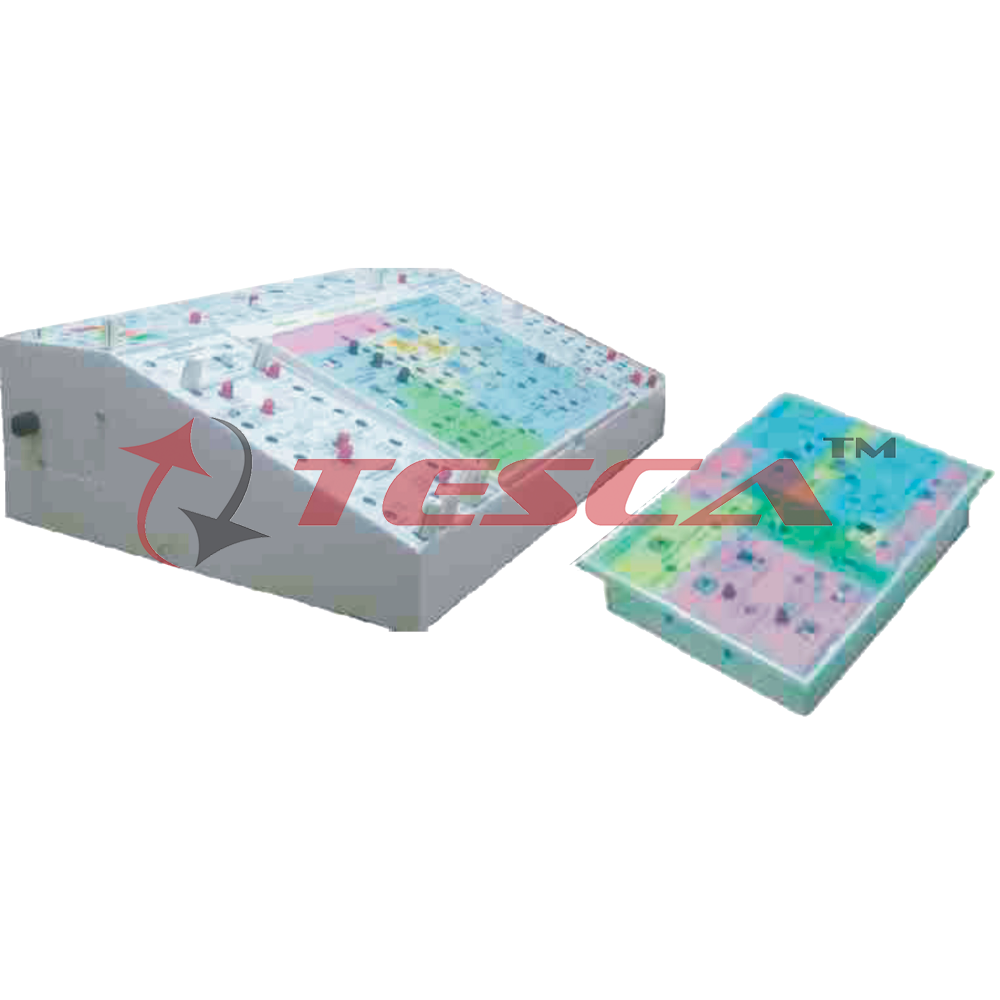Table of Contents
Effective communication is a crucial facet of both personal and professional domains. Technological advancements have spurred a rise in intricate communication systems, thus creating a burgeoning demand for professionals proficient in designing, installing, and maintaining such systems. This need has given rise to the advanced communication system trainer profession. An accomplished trainer in advanced communication systems possesses the knowledge and experience to impart valuable skills to aspiring professionals.
This blog post aims to provide insights into the key role and competencies of an Advanced Communications System Trainer and the relevance and significance of advanced communication systems in diverse industries, including telecommunications, healthcare, and transportation. Furthermore, we will delve into the latest developments in communication technology and how they are reshaping the field.
If you’re interested in becoming a pro at training advanced communication systems or want to know more about this exciting industry, you’ve come to the right place! We’re thrilled to have you join us on this journey as we explore the complexities of advanced communication systems and the amazing professionals who make it all happen.
All about Advanced Communication System Trainer Board
This blog will help you learn and test different communication systems with an Advanced Communication System Trainer board. You’ll learn about its features, specifications, and applications, as well as its advantages and benefits to students and professionals in the communication engineering field.
What is the Advanced Communication System Trainer Board?
Have you heard about the amazing ACS Trainer Board? This versatile hardware system is perfect for those who want to learn and practice digital communication concepts in a fun and interactive way. Plus, the board includes all the necessary components to experiment with crucial techniques like digital modulation, error correction coding, and data framing.
But that’s not all! The ACS Trainer Board also features a cutting-edge field-programmable gate array (FPGA) chip as a programmable digital signal processor. With just a bit of software configuration, you can easily implement a variety of digital communication circuits and functions. So whether you’re a beginner or an expert, the ACS Trainer Board is the perfect tool for all your communication needs.
The Advanced Communication System Trainer Board offers various software tools and simulation environments that aid students in designing and simulating diverse communication system structures. This feature enables students to experiment with multiple designs minus the costly hardware components, providing an efficient and economical medium for learning about communication systems.
Uses of Advanced Communication System Trainer Board:
Here are some uses of an advanced communication system trainer board:
- It helps in understanding the working of various communication circuits and components. The trainer board contains different circuits and components, such as oscillators, modulators, demodulators, filters, mixers, etc., used in modern communication systems.
- It is useful for practical demonstrations. The trainer board provides an easy platform to demonstrate various communication circuits and systems to students.
- It aids in troubleshooting. The trainer board can be used to troubleshoot different types of faults in communication circuits. One can gain the skills required to troubleshoot real communication systems by practicing on the trainer board.
- The trainer board contains basic components that can be used as building blocks to test new communication circuit designs. Engineers and students can test their circuit designs by interfacing them with the components on the trainer board.
- The trainer board requires various communication test instruments like oscilloscopes, signal generators, spectrum analyzers, etc.
Working Principle of Advanced Communication System Trainer Board:
The board comprises various modules that embody distinct segments of a communication system. The primary modules encompass:
1. Transmitter Module:
This contains the components needed to generate a communication signal. It consists of an oscillator circuit, modulator, and amplifier to boost the signal strength.
2. Transmission Medium:
The board simulates various transmission mediums, such as wirelines, optical fibers, and radio waves, allowing hands-on experiments with different transmission lines.
3. Receiver Module:
The receiver module includes a demodulator, amplifier, and detector circuit for receiving and detecting transmitted signals, and students can modify receiver parameters and observe the output.
4. Antenna Module:
The board also provides simulation circuits for various antennas used in wireless communication systems, enabling students to connect and observe their performance.
5. Power Supply Module:
The provision of the necessary DC voltages to energize the diverse circuits on the board is facilitated. Students may adjust the voltage levels to suit their requirements.
9 Components of Advanced Communication System Trainer Board:
An advanced communication system trainer board typically includes the following components:
1. Radio Frequency (RF) Modules:
These allow the board to communicate wirelessly using radio signals. Common RF modules include Bluetooth, WiFi, and Zigbee.
2. Microcontrollers:
The ‘brain’ of the board controls and coordinates all the functions and components. Microcontrollers like Arduino, Raspberry Pi, and PIC are often used.
3. Transceivers:
Transceivers, such as RS232, CAN bus, and USB, are employed to facilitate communication between the microcontroller and RF modules by receiving and transmitting signals.
4. Oscillators:
Crystal oscillators and ceramic resonators are frequently employed as reliable source of reference clock signals to achieve synchronization of the digital logic circuits on the board.
5. Filters:
Integrating essential components such as low pass, high pass, and bandpass filters contributes to filtering undesirable frequencies within input signals.
6. Amplifiers:
Amplifiers such as audio and operational amplifiers are vital in elevating low-input signals to optimize their effectiveness.
7. Connectors:
Various connectors like USB, RJ45 Ethernet, HDMI, and GPIO headers interface the board with external devices.
8. Sensors:
Integrating sensors such as temperature, light, motion, and proximity enhance the device’s functionality by detecting critical parameters.
9. Displays:
Utilizing LCD screens and LED indicators aids in displaying crucial output and status information to the user.
Advanced Communication System Trainer Board Setup:
First, unpack all the components and lay them on a table so you can access each piece. You’ll want to identify the main circuit board, additional modules or components, cables, antennas, and power supply.
Next, connect any additional modules to the main circuit board. Use the labelled connector ports on the board to match the modules. Be sure the modules are correctly aligned and fully seated in the connectors.
Then, attach any antennas to their corresponding ports on the board or modules. Most antennas will only fit in the proper port, so ensure you match them correctly. Secure the antennas so they won’t accidentally get disconnected during use. Now connect the power supply to the board, making sure to match the polarity of the connections. The power supply’s output voltage should match the board’s requirements, as listed in its specifications.
Double-check that all components and modules are firmly connected and seated correctly. Give the entire assembly a once-over to ensure no loose connections or components are at risk of coming loose during operation. Finally, you can power the system for the first time. Monitor it closely for issues like error messages, overheating components, or abnormal function. If all checks out, the setup process is complete, and you can begin configuring and using the communication system as intended.
Types of Advanced Communication System Trainer Board:
1. Digital Communication Trainer Kit
It is used to teach concepts of digital communication and networking. Students can learn about digital modulation techniques, coding, and error detection.
2. Satellite Communication Trainer Kit
It allows students to understand the basics of satellite communication. Components include satellite antennas, RF components, low-noise amplifiers, and receivers to demodulate satellite signals.
3. Optical Fiber Communication Trainer Kit
Students can learn how to transmit data using light pulses through optical fibers. Components include laser diodes, photodiodes, fiber optic cables, and other devices.
4. Data Communication Trainer Kits
Help teach data transmission fundamentals over various media like cables, wireless, etc. Students can experiment with serial and parallel communication, protocols, and network topologies.
5. Analog Communication Trainer Kits
It contains components for students to understand analogue modulation techniques like AM, FM, and signal conditioning circuits. Useful to demonstrate radio transmitters and receivers in action.
6. Advance Communication Trainer Kit
This kit boasts elements for conducting experiments in cutting-edge areas such as multiplexing, mobile communication, network devices, etc. It provides a hands-on approach to understanding communication systems.
7. Mobile Communication Trainer Kits
It equips students to understand GSM, 3G, and 4G technologies used in mobile networks. Components include simulators, mobile phones, antennas, and more for hands-on learning.
Advanced Communication System Trainer Board Price:
The cost of an Advanced Communication System Trainer Board usually depends on its attributes and features. Its price tag can vary from $300 to over $1000. You must carefully assess your needs and these specifications before purchasing.
- Features
- User-friendly interface
- Durability
- Cost
- Brand reputation
Tesca Global Advanced Communication System Trainer Board:

The Advanced Communication System Trainer Board from Tesca Global is the perfect tool for discovering and playing around with various communication techniques and systems. With modules specifically designed for analogue and digital communication, fiber optics, and wired communication, this system utilizes cutting-edge VLSI/CPLDs to enhance the learning experience.
Not only does it include a master unit with many resources such as power supplies, transmitters and receivers, generators, and replaceable experiment panels, but it also comes with a handy student workbook and teacher’s guide to aid in the process.
- Innovative tool for learning and experimenting with communication methods
- Covers analogue, digital, fiber optics, and wired communication
- Modular experiment panels using VLSI/CPLDs technology
- Aesthetically designed electronic desk (master unit)
- Various experiment resources included (power supplies, generators, transmitters/receivers, filters, etc.)
- Central slot for replaceable experiment panels
- It comes with a student workbook and an instructor’s guide
- FM, AM, and fiber optics wireless communication with adjustable controls
- Detector with separate sockets for digital, AC coupled, and TTL operations
- Waveform generator with a selection of sine/square/triangle waves and output voltage range up to 20Vpp max
- Multiple power supply options are available
- Master unit dimensions: 400mm(W), 125mm(H), 270mm(D), net weight: 8kg, gross weight: 10kg
- Panel dimensions: 215mm(W), 165mm(H), 40mm(D), net weight: 700g approx
- It includes a handheld microphone with a preamplifier and a variable gain audio amplifier with a built-in loudspeaker/earphone.






Add comment